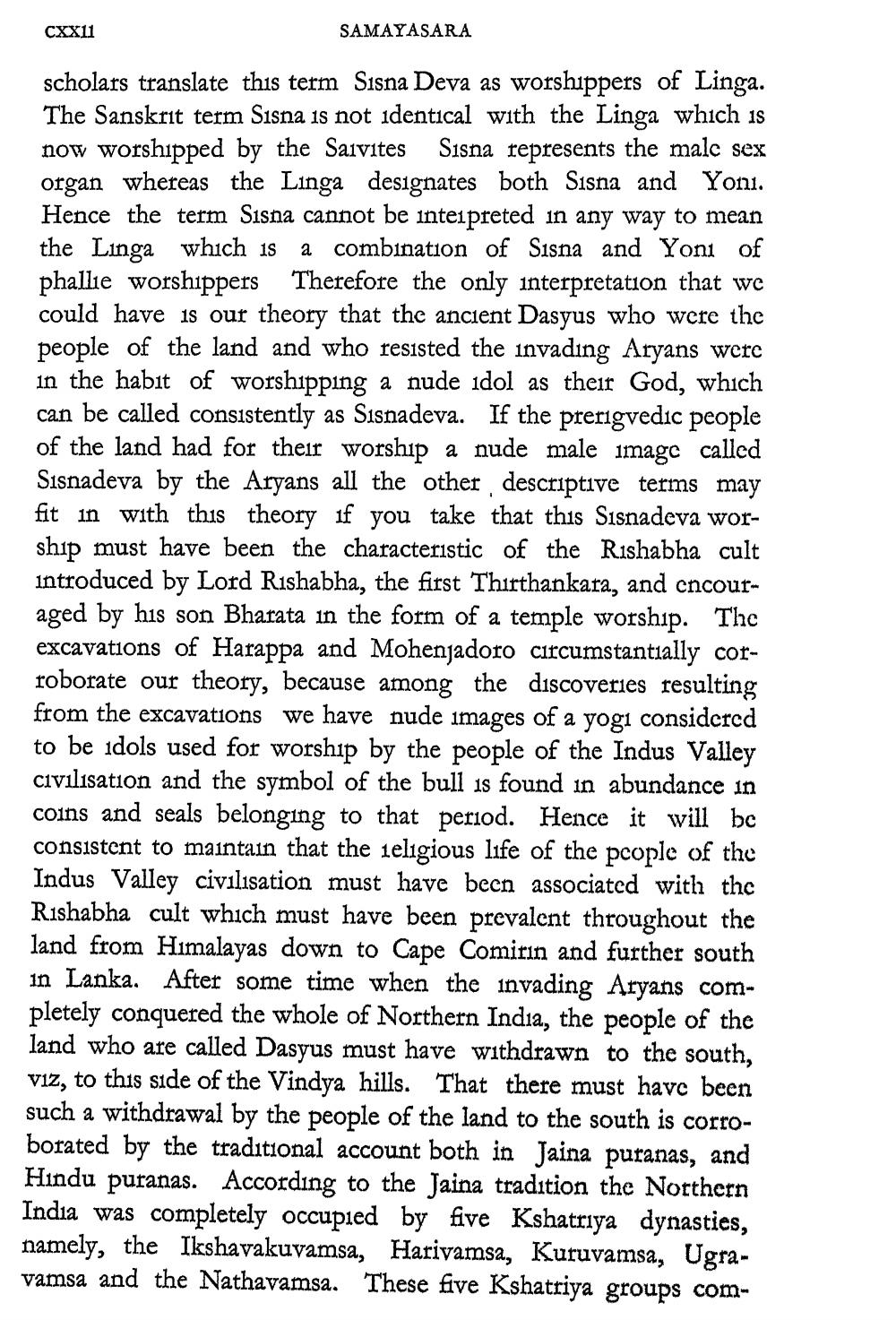________________
CXX11
SAMAYASARA
scholars translate this term Sisna Deva as worshippers of Linga. The Sanskrit term Sisna is not identical with the Linga which is now worshipped by the Saivites Sisna represents the male sex organ whereas the Linga designates both Sisna and Yoni. Hence the term Sisna cannot be inteipreted in any way to mean the Linga which is a combination of Sisna and Yoni of phallie worshippers Therefore the only interpretation that we could have is our theory that the ancient Dasyus who were the people of the land and who resisted the invading Aryans were in the habit of worshipping a nude idol as their God, which can be called consistently as Sisnadeva. If the prerigvedic people of the land had for their worship a nude male image called Sisnadeva by the Aryans all the other descriptive terms may fit in with this theory if you take that this Sisnadeva worship must have been the characteristic of the Rishabha cult introduced by Lord Rishabha, the first Thirthankara, and encouraged by his son Bharata in the form of a temple worship. The excavations of Harappa and Mohenjadoro circumstantially corroborate our theory, because among the discoveries resulting from the excavations we have nude images of a yogi considered to be idols used for worship by the people of the Indus Valley civilisation and the symbol of the bull is found in abundance in coins and seals belonging to that period. Hence it will be consistent to maintain that the religious life of the people of the Indus Valley civilisation must have been associated with the Rishabha cult which must have been prevalent throughout the land from Himalayas down to Cape Comirin and further south in Lanka. After some time when the invading Aryans completely conquered the whole of Northern India, the people of the land who are called Dasyus must have withdrawn to the south, viz, to this side of the Vindya hills. That there must have been such a withdrawal by the people of the land to the south is corroborated by the traditional account both in Jaina puranas, and Hindu puranas. According to the Jaina tradition the Northern India was completely occupied by five Kshatriya dynasties, namely, the Ikshavakuvamsa, Hariyamsa, Kuruvamsa, Ugravamsa and the Nathavamsa. These five Kshatriya groups com




